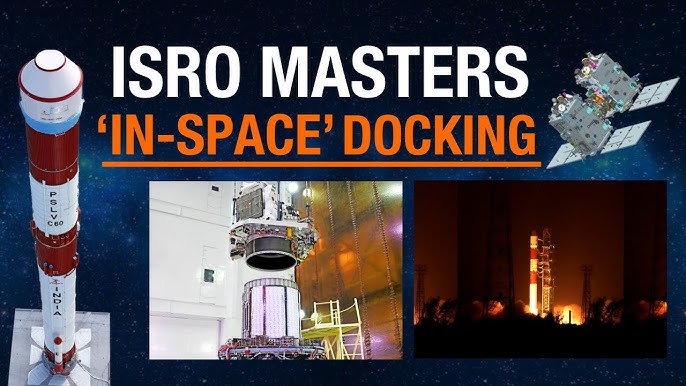Space Weather’s Critical Role in ISRO’s Historic Satellite Docking Mission
Mission Overview and Achievement
The Indian Space Research Organisation (ISRO) achieved a significant milestone on Thursday by successfully completing its first-ever satellite docking mission, making India the fourth country globally to master this complex technological feat. The Space Docking Experiment (SpaDeX) demonstrated India’s growing capabilities in advanced space operations.
Understanding Space Weather by ISRO
Just as terrestrial weather affects rocket launches, space weather plays a crucial role in determining the success of space missions. Space weather originates from the Sun’s activity, specifically from its outer atmosphere known as the solar corona. The Sun continuously releases electrically charged particles and gases into space as solar wind, traveling at millions of kilometers per hour and reaching the furthest corners of our solar system.
Solar Activity Cycles
The intensity and frequency of space weather fluctuate based on an 11-year solar activity cycle, measured through the observation of sunspots. These dark spots on the Sun’s surface serve as indicators of solar activity – higher numbers typically signal more hazardous space weather conditions. The current cycle, which began in late 2019, reached its maximum phase in November 2023, marking a period of increased solar activity.
Impact on Space Operations
According to Dr. Dibyendu Nandi, solar physicist and head of the Center of Excellence in Space Sciences India (CESSI) at IISER Kolkata, space weather can significantly impact satellite operations. While Earth’s atmosphere shields us from these effects, satellites and spacecraft remain vulnerable to:
- Enhanced high-energy radiation from solar flares that can blind sensors by ISRO
- Electronic control system interference
- Communication disruptions from magnetic storms
- Positional errors caused by coronal mass ejections
- Disturbances from high-speed solar wind streams
The SpaDeX Mission Details
ISRO launched two small spacecraft on December 30 – SDX01 (the ‘Chaser’) and SDX02 (the ‘Target’) – into a low-Earth circular orbit. After initial deployment, the spacecraft were separated by approximately 20 kilometers. The mission involved a carefully orchestrated series of maneuvers where the Chaser gradually approached the Target at predetermined distances:
- Initial separation: 20 km
- Progressive approach stages: 5 km, 1.5 km, 500 m, 225 m, 15 m, and 3 m
- Final docking phase
Favorable Conditions for Success
The mission’s timing coincided with unusually calm solar conditions. CESSI’s analysis indicated reduced sunspot activity and fewer magnetic structures on the Sun, creating an optimal environment for the docking operation. This relative calm in space weather significantly contributed to the mission’s success, as precision docking requires minimal external disturbances.
Future Applications and Significance
The successful completion of SpaDeX has important implications for India’s future space endeavors, particularly:
- The Chandrayaan-4 mission
- Development of the Bharatiya Antriksha Station (India’s planned space station)
- Future missions requiring assembly of multiple components in space
Technical Challenges
ISRO Successful docking operations require extremely precise conditions:
- Zero relative velocity between spacecraft
- Perfect alignment of docking ports
- Stable space weather conditions
- Accurate navigation and control systems These requirements make docking one of the most challenging space operations, especially given the high speeds at which satellites orbit Earth.
Strategic Importance
This achievement positions India among an elite group of nations capable of performing complex space operations. The technology demonstrated in SpaDeX is crucial for:
- Space station assembly and maintenance
- Satellite servicing and refueling
- Future deep space missions
- International space collaboration
The successful completion of this mission under favorable space weather conditions not only demonstrates India’s technological capabilities but also highlights the importance of understanding and monitoring space weather for future space operations. As space activities increase globally, such expertise becomes increasingly valuable for the international space community.

